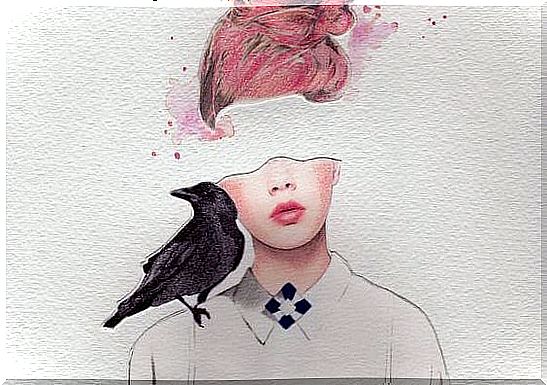4 Types Of Internal Dialogues You Should Avoid

Everyone goes through painful moments and unexpected negative situations that they have to overcome. However, these experiences can lead some people to develop a negative internal dialogue. This is not ideal under any circumstances, but it is even more dangerous when it threatens to become a permanent habit.
No one is exempt from problems that they cannot solve. This is because it is because they are too complex, or because you do not have the right tools to solve them. Under these circumstances, if you consider the problem important, it is normal for anxiety to occur, as the challenge has turned into a threat.
In disorders like these, it is common to have internal dialogues that reinforce negative ideas and bring the person back to the painful experience they still have not been able to overcome. The worst part is that when they face any new experience that reminds them of what happened, they start reacting negatively because they consider it potentially dangerous.
Predictable anxiety is the main component of this type of thought pattern, once it has been established. From this point on, the person repeats distorted thoughts that intensify the initial anxiety until it becomes unbearable.

A dialogue that escalates
When a person is in a state of anxiety, they tend to develop a disastrous internal dialogue. This perception of life is the product of a changed and thus distorted emotional state. The danger is that if they do not correct this dialogue quickly, it can become a vicious cycle that gets worse over time, and can even lead to a panic attack.
Symptoms of a panic attack include chest tightness, irregular heartbeat, dizziness, sweaty hands, and palpitations. In biological terms, this is a common mammalian reaction to a threat. The sufferer perceives a situation that they cannot control, and without realizing it, their internal dialogue reinforces these negative and catastrophic ideas. Thus, they lose control and go into crisis mode.

Panic attacks can escalate and become extremely severe. However, when effective action is taken at the first sign of symptoms, the crisis can be stopped and the person can get out of the cycle of negative thinking. This is possible because these negative thought patterns are learned and therefore they can change.
Classification of internal dialogues
Specialists in psychology have classified 4 types of internal dialogues that can trigger anxiety: catastrophic, self-critical, discriminatory and self-demanding.
- Catastrophic: Anxiety occurs when the person imagines the worst case scenario. They anticipate certain events (which would not really happen) and magnify them. This leads to misconception, which can trigger a panic attack. The essential expression of this type of internal dialogue is “anything can turn into a tragedy when you least expect it.”
- Self-critical: The traits that distinguish this type of dialogue involve a permanent state of judgment and negative assessment of one’s own behavior. They emphasize their limitations and mistakes, making their lives unmanageable. They tend to be dependent on others and compare themselves with others, which makes them feel that they have a disadvantage. They envy those who achieve their goals and become frustrated when they cannot achieve their own. The preferred phrases in this type of internal dialogue are, “I can not,” “I do not get,” “I do not deserve it.”
- Discriminatory: This type is characterized by the fact that they feel unprotected and hopeless, which leads them to believe that they have no treatment, that they are not making any progress or progress. They believe that everything will always be the same, and that there will always be insurmountable obstacles between them and what they want. They do not like the way things are, but they do not try to change them. In the discriminatory type of internal dialogue, people tend to say things like, “no one understands me,” “no one values me,” “I suffer and no one cares.”
- Self-demanding: People in this category develop fatigue and chronic stress due to their perfectionism. They are intolerant of mistakes and try to convince themselves that their mistakes are due to external causes and not them. They struggle to think about how they did not achieve their goals due to lack of money or status despite being friendly to everyone. The self-demanding internal dialogue contains sentences such as “it is not enough”, “it is not perfect”, “it did not go the way I wanted,” etc.

To regain control
Getting to know these types of internal dialogues is a great first step towards regaining control and preventing a negative perception of yourself or your environment, which only triggers a state of anxiety.
However, real change involves discovering the negative thoughts and replacing them with positive affirmations. It is important to control your breathing, relax and face the situation calmly. Pessimistic and self-destructive attitudes are self-sustaining.
It is not easy to change these reactions to things you consider threatening, but it is the same as when you want to change a bad habit, such as quitting smoking. It requires determination and effort, but in the end you can achieve it if you are committed to it.









